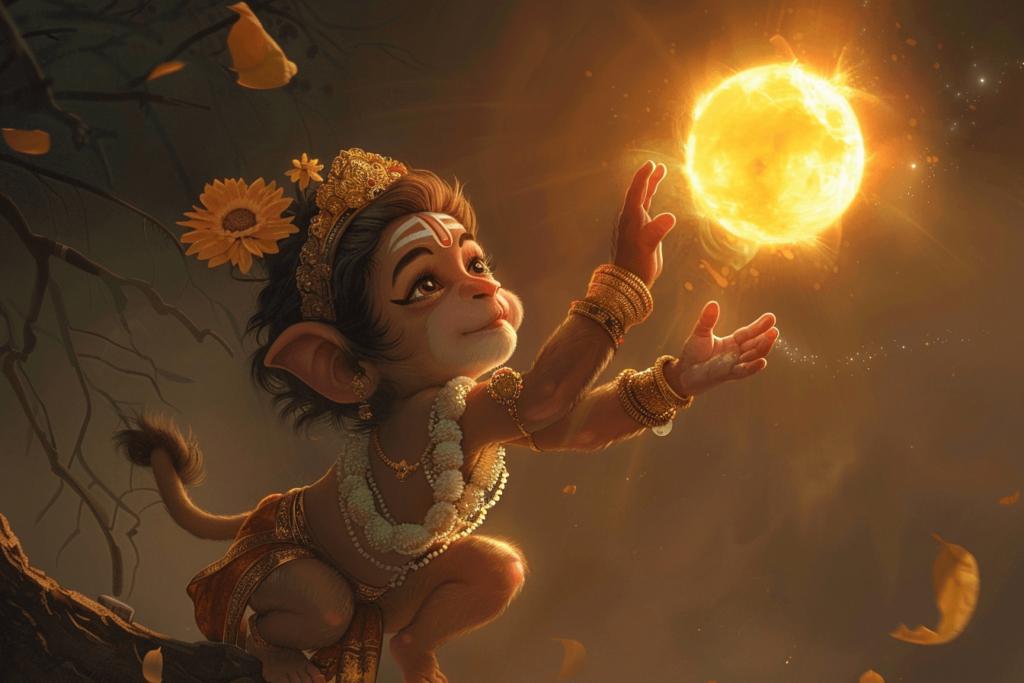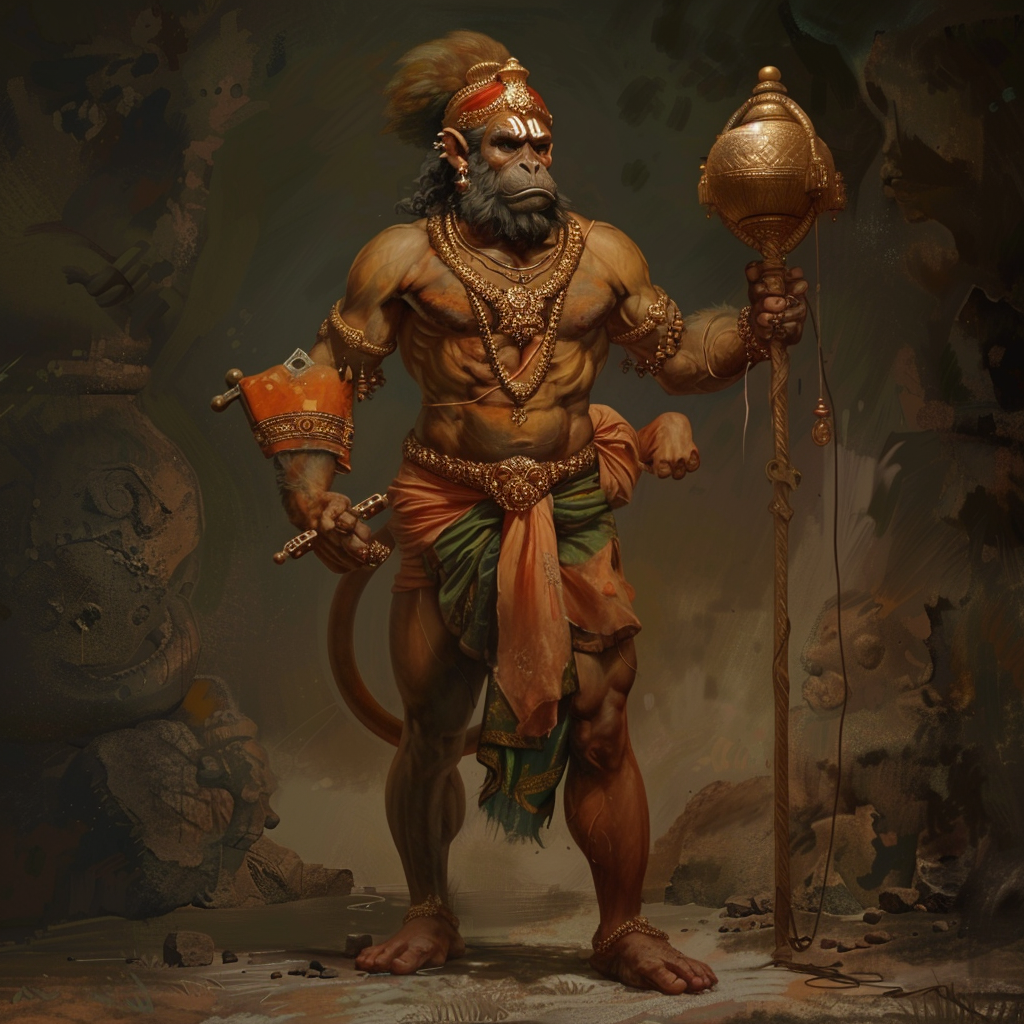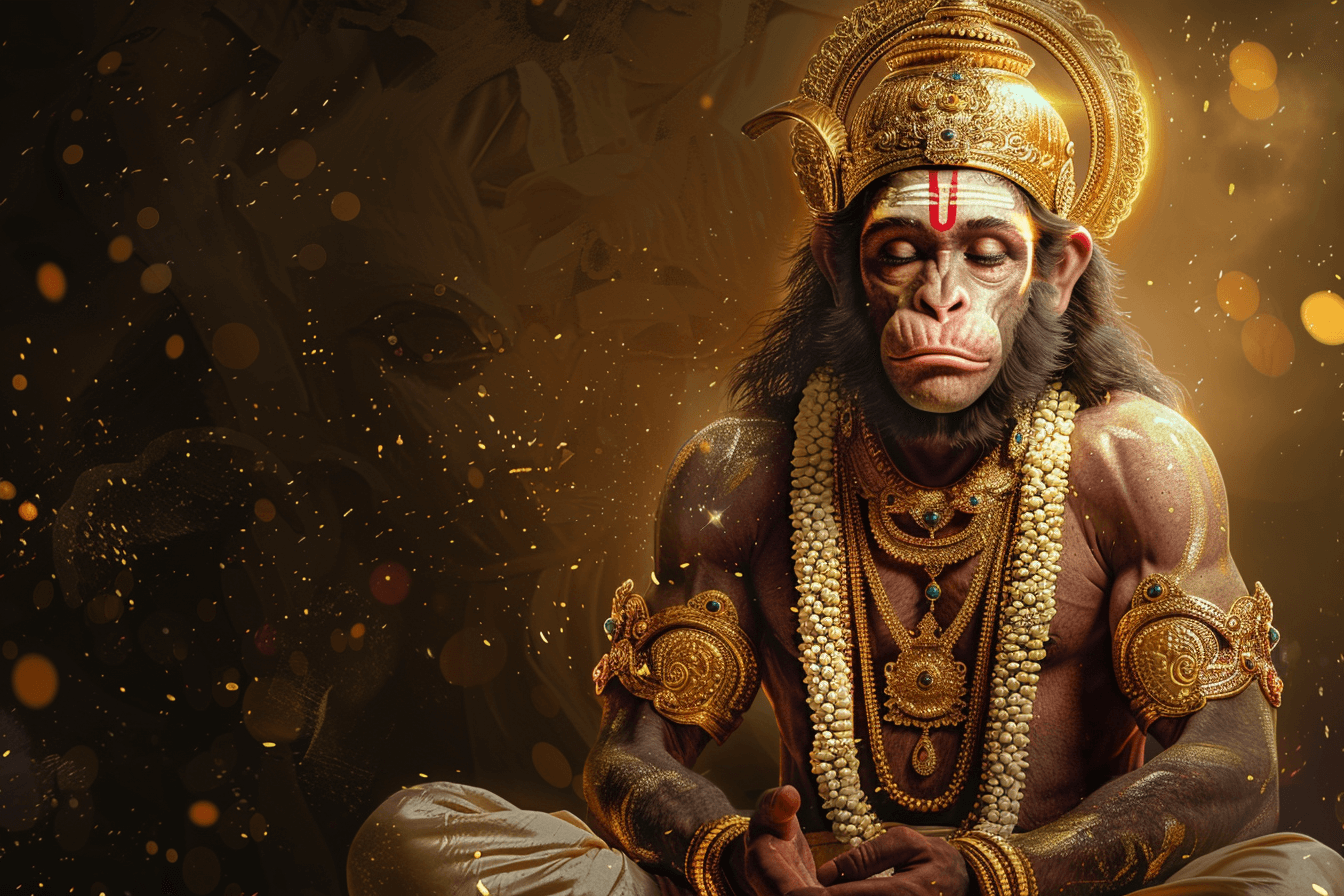Hanuman, a revered figure in Hindu mythology, is celebrated for his unwavering devotion, incredible strength, and selfless service. Known as an immortal being, Hanuman’s tales from the Ramayana and various Puranas showcase his numerous powers and virtues. This blog explores the attributes, stories, and enduring legacy of Hanuman, highlighting why he remains a symbol of devotion and strength.
Hanuman’s Divine Birth
Hanuman’s birth is intertwined with the epic tale of Prince Rama. Born to Anjana, a celestial nymph, and the wind god Vayu, Hanuman’s divine origin set the stage for his remarkable life. A celestial pudding sent by the gods led to Hanuman’s birth, marking the beginning of his extraordinary journey.
The Story of Anjana and Kesari
Anjana, Hanuman’s mother, was once an apsara (celestial nymph) named Punjikasthala, cursed to be born on Earth in a monkey form. She performed intense penance to be freed from the curse. Her prayers were answered when she gave birth to Hanuman after receiving a divine pudding intended for King Dasaratha’s queens. This divine intervention highlights Hanuman’s celestial heritage and his destined greatness.
Hanuman’s Childhood Adventures
Reaching for the Sun
As a child, Hanuman mistook the rising sun for a ripe fruit and leapt towards it. Indra, the king of gods, struck him with a thunderbolt, injuring his jaw and earning him the name “Hanuman,” meaning “disfigured jaw.” This incident led to the gods bestowing various powers upon him, including immortality, strength, and invulnerability.

Hanuman’s Powers
Hanuman received numerous blessings from the gods:
- Indra: Strength as great as his own.
- Brahma: Ability to change size at will (Kama-rupin).
- Agni: Immunity to fire.
- Varuna: Protection from water.
- Vayu: Speed as swift as the wind.
- Yama: Immunity from death.
- Shiva: Unparalleled bravery and courage.
Despite his powers, Hanuman’s youthful mischief led him to forget his abilities due to a curse from a sage he pranked. This amnesia was crucial in teaching him humility and self-control.
Hanuman’s Role in the Ramayana
The Quest to Find Sita
Hanuman played a crucial role in the Ramayana, particularly in the search for Sita, Rama’s kidnapped wife. Sent southwards, Hanuman’s journey led him to the ocean’s edge, where he regained his forgotten powers through divine intervention. His ability to change size allowed him to cross the ocean and locate Sita in Lanka.
Once in Lanka, Hanuman shrank to the size of an ant to evade detection and found Sita imprisoned in Ravana’s garden. He delivered Rama’s message to her, assuring her of rescue and demonstrating his loyalty and bravery.
The Battle of Lanka
During the Battle of Lanka, Hanuman’s strength and devotion were pivotal. He located Sita, informed Rama, and fought valiantly in the ensuing war. Notably, Hanuman flew to the Himalayas to fetch a medicinal herb that saved Rama’s brother Lakshmana’s life, showcasing his immense dedication and strength.
Hanuman’s Unmatched Devotion
Hanuman’s Heart
Hanuman’s devotion to Rama is legendary. After the Battle of Lanka, when Rama offered him gifts, Hanuman humbly refused, declaring that Rama and Sita always resided in his heart. To prove his point, he tore open his chest, revealing the divine couple within, symbolizing his pure and selfless devotion.
Hanuman: An Immortal Hero
Hanuman was blessed with immortality by Rama himself, ensuring his presence on Earth as long as people worship Rama. This blessing solidified Hanuman’s status as an eternal protector and a symbol of unwavering loyalty.

Worship and Legacy
Hanuman Chalisa
The Hanuman Chalisa, a devotional hymn dedicated to Hanuman, is recited by millions seeking his blessings and protection. Composed by the poet Tulsidas, the Chalisa highlights Hanuman’s virtues and his unwavering support for devotees in overcoming life’s obstacles.
Panchmukhi Hanuman and Other Forms
Hanuman is often depicted in various forms, including Panchmukhi Hanuman (five-faced Hanuman), symbolizing his multifaceted powers. Each face represents a different aspect of his abilities:
- Hanuman: His original form, representing courage and strength.
- Narasimha: The lion-faced form, symbolizing protection.
- Garuda: The eagle-faced form, signifying health and well-being.
- Varaha: The boar-faced form, representing the power to uplift.
- Hayagriva: The horse-faced form, symbolizing knowledge.
Hanuman Footprint and Anjaneya Swamy
Hanuman’s presence is celebrated through various relics and sites, including the legendary Hanuman footprint and temples dedicated to Anjaneya Swamy, another name for Hanuman. These sites are revered by devotees who seek his blessings for strength and protection.
Hanuman’s Other Avatars
Hanuman is also known for his various avatars and roles in different texts. In the Shiva Purana, he is considered an incarnation of Lord Shiva. His avatars include roles in various Puranic stories where he continues to help devotees and fight evil.
Hanuman as Sankat Mochan Mahabali
Often called Sankat Mochan Mahabali Hanuman, he is seen as the remover of obstacles and the great protector. This title emphasizes his role in helping devotees overcome challenges and adversities.
Hanuman’s legacy as a symbol of devotion, strength, and selfless service continues to inspire millions. From his divine birth to his heroic deeds in the Ramayana, Hanuman exemplifies the virtues of loyalty and courage. His immortality and enduring presence in Hindu worship through the Hanuman Chalisa, Panchmukhi Hanuman forms, and numerous temples make him a timeless figure of reverence.




